Interview with Stephen Kenn
Stephen Kenn is more than a furniture designer. He is an artist. His work is as functional as it is beautiful and each piece tells its own unique story. We had the opportunity to ask Stephen a few questions about his life, his passions and his collaboration with Moore & Giles and Modern Anthology. We love seeing friends collaborate, and this Stephen Kenn/Modern Anthology exclusive is a must-see! Moore & Giles has previously had the pleasure of collaborating with Modern Anthology on the making of the Jay Briefcase, which can be seen here.
Introducing, Stephen Kenn...
Tell us about yourself:
My name is Stephen Kenn and 12 years ago I moved from Canada down to LA to pursue a life long relationship with design. I currently own and operate our studio alongside my wife Beks. We live in a very unique loft building in downtown LA which we have chosen to divide into a showroom / coffee shop space and our work studio is 15 min south.
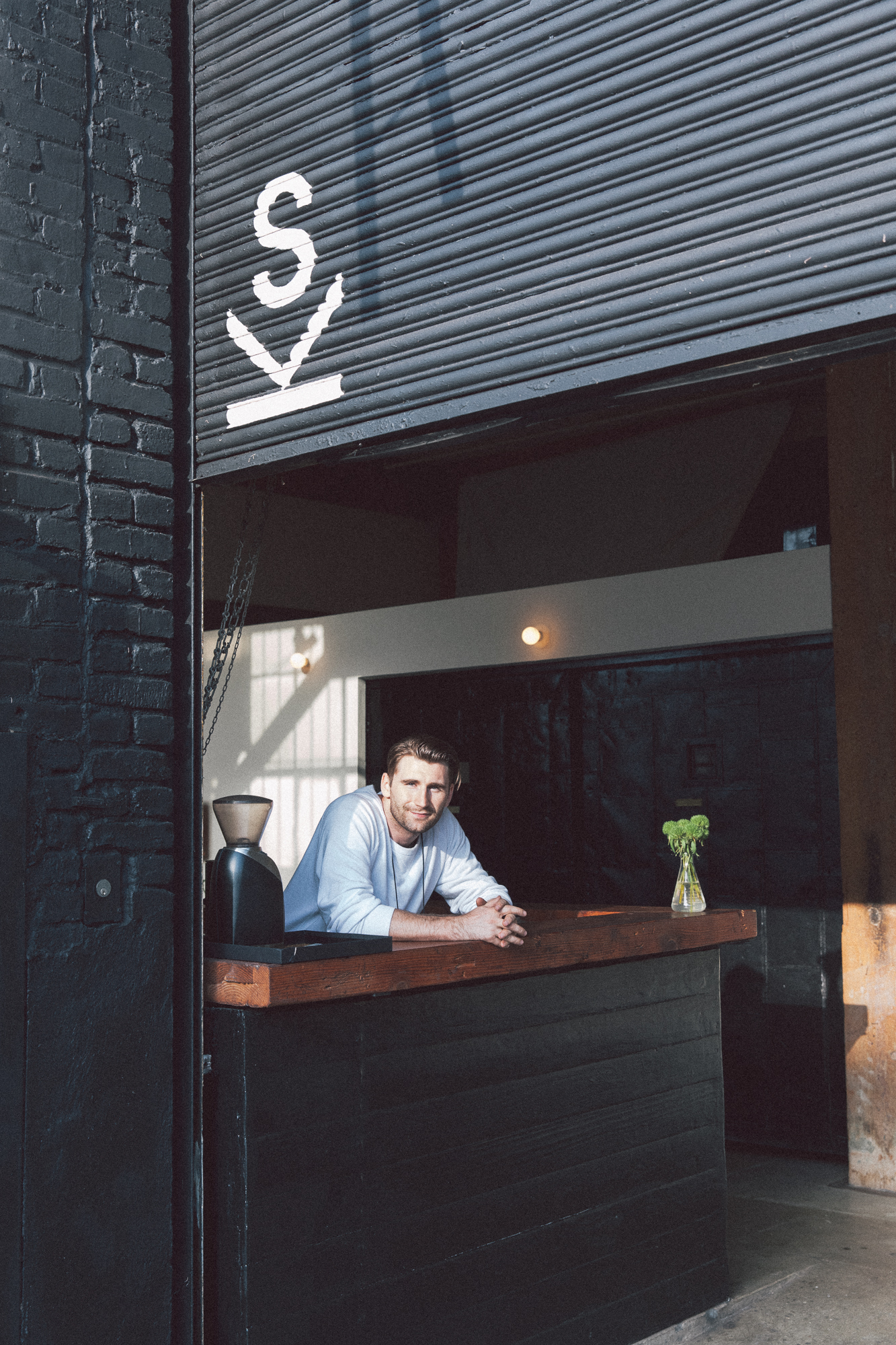 Describe the journey that led you into furniture design:
When I was 20 years old my friend Steve Dubbeldam and I started a denim brand together and quickly made the move down to LA after attending a trade show in Las Vegas. I fell in love with the process of converting ideas into objects and LA quickly became a playground for learning, meeting people and uncovering unique and untold stories. I began making furniture in response to a question that my wife asked me, "what have you been curious about lately?" I had been thinking about furniture and that week I tore apart our sofa to learn how it was made. I'm still curious and learning new things about furniture construction everyday.
Who and what inspires you?
As I mentioned, I began by taking a sofa apart to learn about how it was made. What I discovered was that typically the upholstery was hiding the most interesting parts. I love to see how objects function and then once every component is exposed there is an opportunity to make them beautiful as well as functional. I was originally very inspired by military materials as well as the simplistic and durability found within military issued supplies. I have since then expanded my scope into new materials including leather, hand dyed indigo canvas, wool blankets as well as polished and plated finishes. I still allow curiosity to be my guide and experiment with new materials that interest me.
Briefly describe your design process:
I begin with a problem. This may be a problem that many other people have designed a solution for. I try to look at as many examples of past solutions as possible and make note of brilliant perspectives as well as careless or cumbersome perspectives. I then move into isolation and freely allow my mind to wander. Sometimes it's as simple as closing my eyes and building things in my head. I go until I get blocked and then I either work other angles or begin again. I consider materials at this time as well. The result is often "nothing new" to some and yet completely original to others. In my opinion, it takes courage to solve problems in a new way. It exposes our own perspective to the world and although it opens us up to criticism, it also progresses the conversation which is really why I believe that it is ok for me to work as a designer.
Describe the journey that led you into furniture design:
When I was 20 years old my friend Steve Dubbeldam and I started a denim brand together and quickly made the move down to LA after attending a trade show in Las Vegas. I fell in love with the process of converting ideas into objects and LA quickly became a playground for learning, meeting people and uncovering unique and untold stories. I began making furniture in response to a question that my wife asked me, "what have you been curious about lately?" I had been thinking about furniture and that week I tore apart our sofa to learn how it was made. I'm still curious and learning new things about furniture construction everyday.
Who and what inspires you?
As I mentioned, I began by taking a sofa apart to learn about how it was made. What I discovered was that typically the upholstery was hiding the most interesting parts. I love to see how objects function and then once every component is exposed there is an opportunity to make them beautiful as well as functional. I was originally very inspired by military materials as well as the simplistic and durability found within military issued supplies. I have since then expanded my scope into new materials including leather, hand dyed indigo canvas, wool blankets as well as polished and plated finishes. I still allow curiosity to be my guide and experiment with new materials that interest me.
Briefly describe your design process:
I begin with a problem. This may be a problem that many other people have designed a solution for. I try to look at as many examples of past solutions as possible and make note of brilliant perspectives as well as careless or cumbersome perspectives. I then move into isolation and freely allow my mind to wander. Sometimes it's as simple as closing my eyes and building things in my head. I go until I get blocked and then I either work other angles or begin again. I consider materials at this time as well. The result is often "nothing new" to some and yet completely original to others. In my opinion, it takes courage to solve problems in a new way. It exposes our own perspective to the world and although it opens us up to criticism, it also progresses the conversation which is really why I believe that it is ok for me to work as a designer.
 Tell us about the exclusive with Modern Anthology:
Modern Anthology approached us with the idea of using Moore & Giles leather on our furniture. I had never seen Moore & Giles leather before but when the samples arrived, I was completely in favor. The weight and hand were both perfect! I was so impressed with all of the colors and finishes and was excited that MA choose the olive for their in store sample. We suggested an antique brass frame with oxblood leather and olive webbing belts. The result was beautiful! I was really impressed and wanted to keep it for myself.
Tell us about the exclusive with Modern Anthology:
Modern Anthology approached us with the idea of using Moore & Giles leather on our furniture. I had never seen Moore & Giles leather before but when the samples arrived, I was completely in favor. The weight and hand were both perfect! I was so impressed with all of the colors and finishes and was excited that MA choose the olive for their in store sample. We suggested an antique brass frame with oxblood leather and olive webbing belts. The result was beautiful! I was really impressed and wanted to keep it for myself.
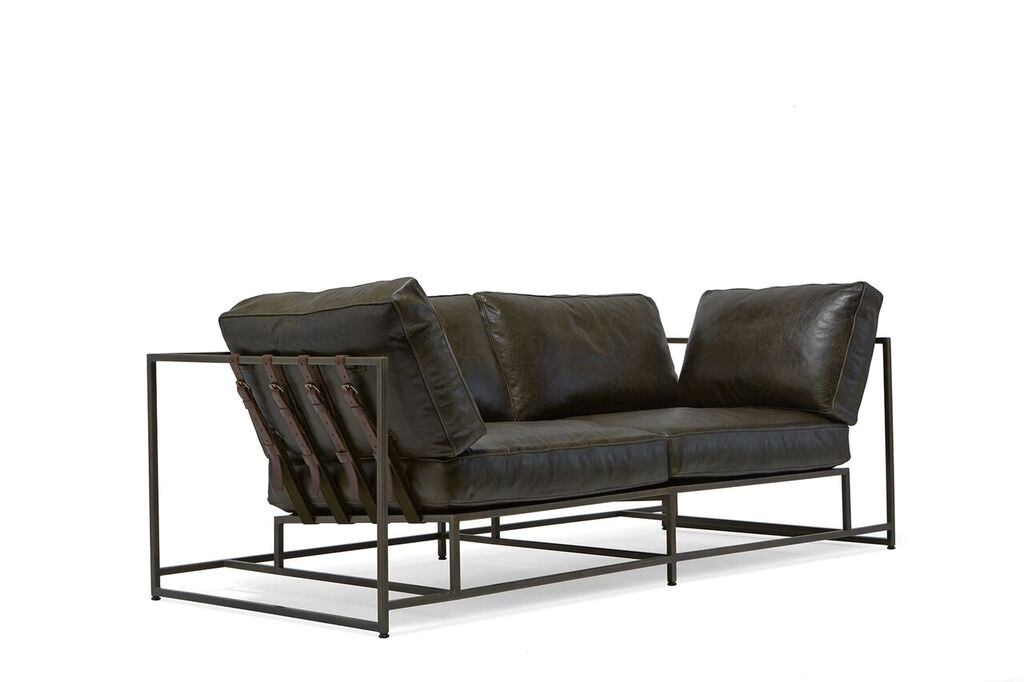 What is it about leather that you think resonates with people?
I'm not sure how deeply people think about why they like leather, it's more instinct. Typically when anyone picks up one of our leather bags they immediately bring it up to their nose and inhale deeply. The smell triggers either an early memory or a sense of comfort. For me there is always a remembrance of sacrifice involved which can sometimes be an unattractive way to view leather but we shouldn't forget that it was a living creature and the hide is a remarkable material that had a life cycle and continues to age once it has entered this new life as a functional object. There are many rewards to working with organic materials and I think watching it patina over time is a beautiful reminder to how important it has become to us.
What is it about leather that you think resonates with people?
I'm not sure how deeply people think about why they like leather, it's more instinct. Typically when anyone picks up one of our leather bags they immediately bring it up to their nose and inhale deeply. The smell triggers either an early memory or a sense of comfort. For me there is always a remembrance of sacrifice involved which can sometimes be an unattractive way to view leather but we shouldn't forget that it was a living creature and the hide is a remarkable material that had a life cycle and continues to age once it has entered this new life as a functional object. There are many rewards to working with organic materials and I think watching it patina over time is a beautiful reminder to how important it has become to us.
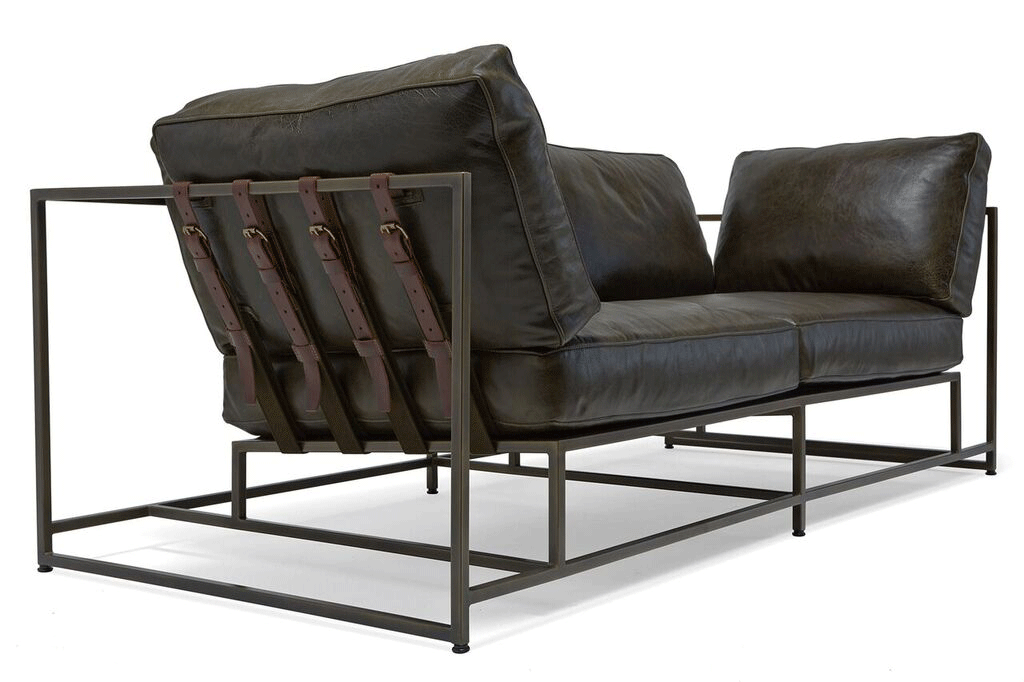
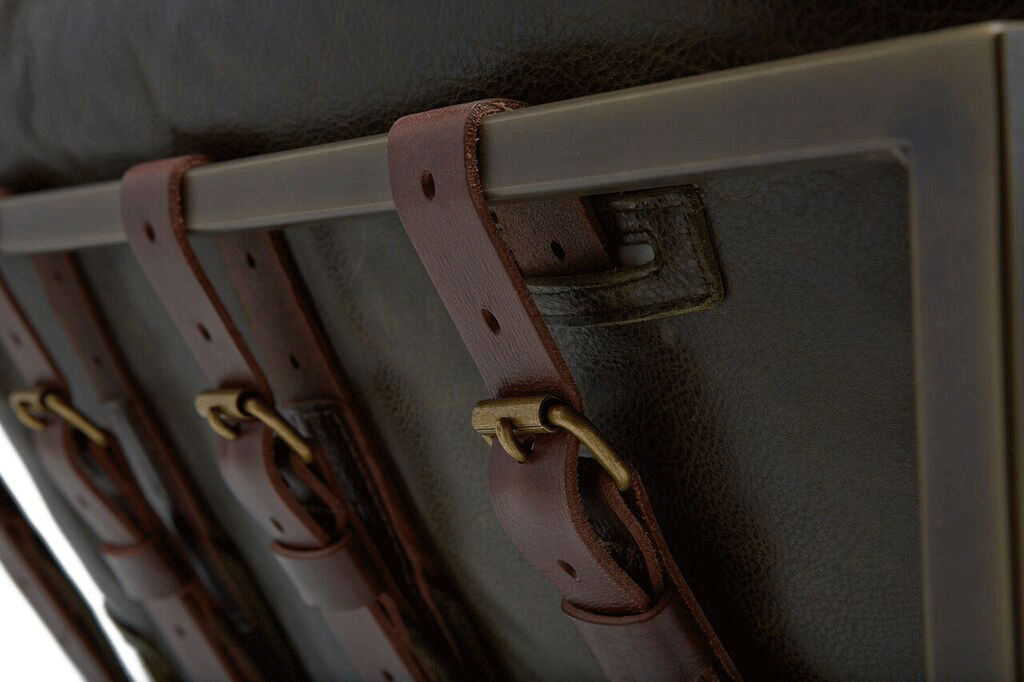
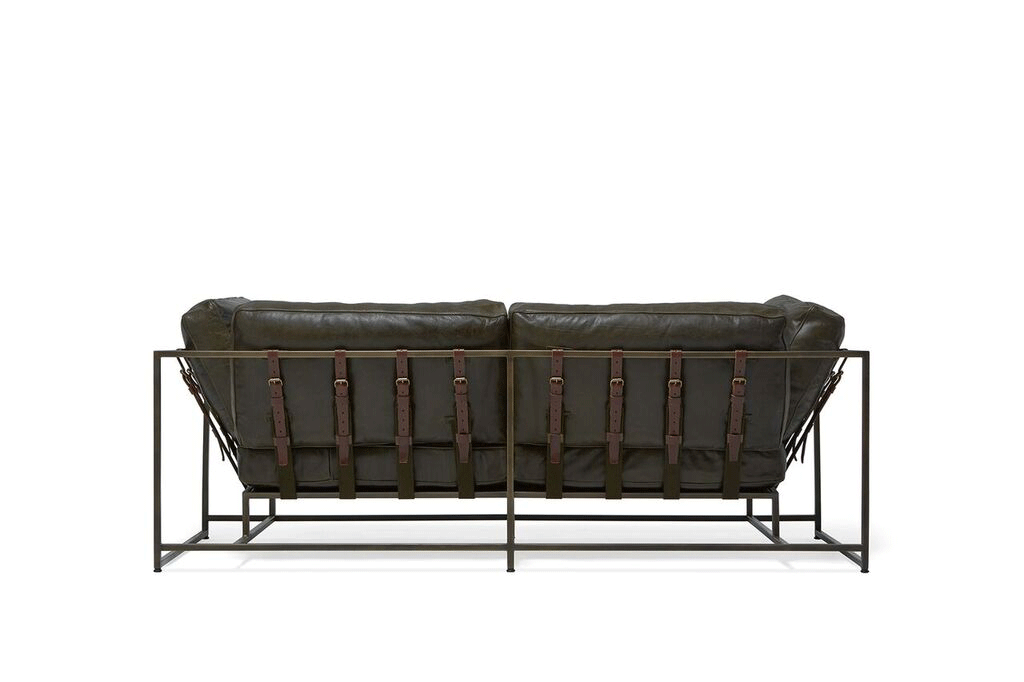
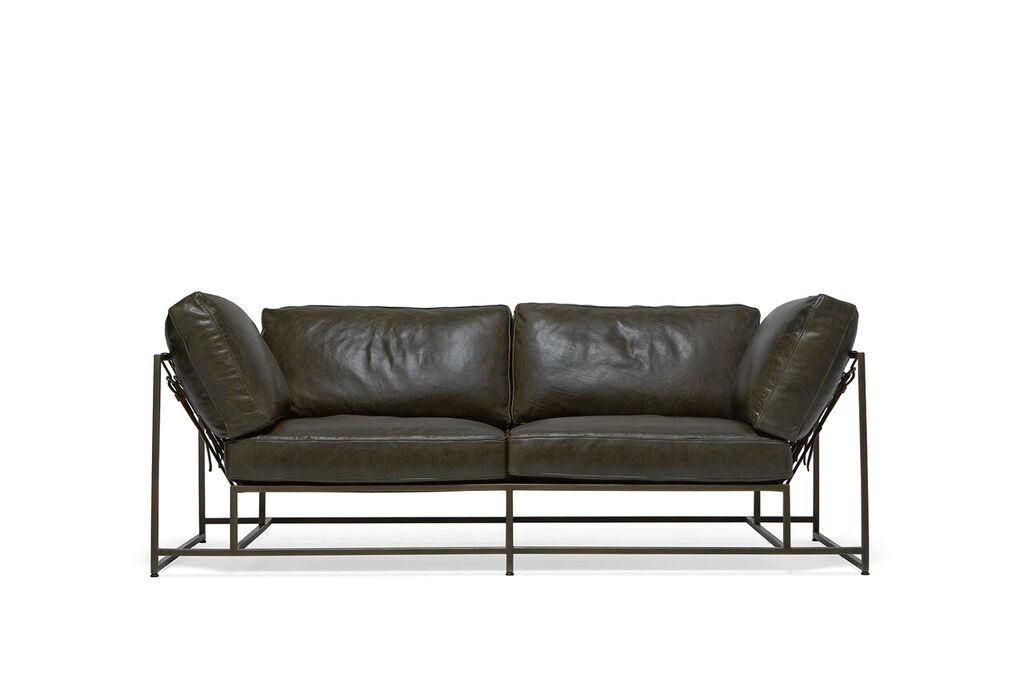
 Describe the journey that led you into furniture design:
When I was 20 years old my friend Steve Dubbeldam and I started a denim brand together and quickly made the move down to LA after attending a trade show in Las Vegas. I fell in love with the process of converting ideas into objects and LA quickly became a playground for learning, meeting people and uncovering unique and untold stories. I began making furniture in response to a question that my wife asked me, "what have you been curious about lately?" I had been thinking about furniture and that week I tore apart our sofa to learn how it was made. I'm still curious and learning new things about furniture construction everyday.
Who and what inspires you?
As I mentioned, I began by taking a sofa apart to learn about how it was made. What I discovered was that typically the upholstery was hiding the most interesting parts. I love to see how objects function and then once every component is exposed there is an opportunity to make them beautiful as well as functional. I was originally very inspired by military materials as well as the simplistic and durability found within military issued supplies. I have since then expanded my scope into new materials including leather, hand dyed indigo canvas, wool blankets as well as polished and plated finishes. I still allow curiosity to be my guide and experiment with new materials that interest me.
Briefly describe your design process:
I begin with a problem. This may be a problem that many other people have designed a solution for. I try to look at as many examples of past solutions as possible and make note of brilliant perspectives as well as careless or cumbersome perspectives. I then move into isolation and freely allow my mind to wander. Sometimes it's as simple as closing my eyes and building things in my head. I go until I get blocked and then I either work other angles or begin again. I consider materials at this time as well. The result is often "nothing new" to some and yet completely original to others. In my opinion, it takes courage to solve problems in a new way. It exposes our own perspective to the world and although it opens us up to criticism, it also progresses the conversation which is really why I believe that it is ok for me to work as a designer.
Describe the journey that led you into furniture design:
When I was 20 years old my friend Steve Dubbeldam and I started a denim brand together and quickly made the move down to LA after attending a trade show in Las Vegas. I fell in love with the process of converting ideas into objects and LA quickly became a playground for learning, meeting people and uncovering unique and untold stories. I began making furniture in response to a question that my wife asked me, "what have you been curious about lately?" I had been thinking about furniture and that week I tore apart our sofa to learn how it was made. I'm still curious and learning new things about furniture construction everyday.
Who and what inspires you?
As I mentioned, I began by taking a sofa apart to learn about how it was made. What I discovered was that typically the upholstery was hiding the most interesting parts. I love to see how objects function and then once every component is exposed there is an opportunity to make them beautiful as well as functional. I was originally very inspired by military materials as well as the simplistic and durability found within military issued supplies. I have since then expanded my scope into new materials including leather, hand dyed indigo canvas, wool blankets as well as polished and plated finishes. I still allow curiosity to be my guide and experiment with new materials that interest me.
Briefly describe your design process:
I begin with a problem. This may be a problem that many other people have designed a solution for. I try to look at as many examples of past solutions as possible and make note of brilliant perspectives as well as careless or cumbersome perspectives. I then move into isolation and freely allow my mind to wander. Sometimes it's as simple as closing my eyes and building things in my head. I go until I get blocked and then I either work other angles or begin again. I consider materials at this time as well. The result is often "nothing new" to some and yet completely original to others. In my opinion, it takes courage to solve problems in a new way. It exposes our own perspective to the world and although it opens us up to criticism, it also progresses the conversation which is really why I believe that it is ok for me to work as a designer.
 Tell us about the exclusive with Modern Anthology:
Modern Anthology approached us with the idea of using Moore & Giles leather on our furniture. I had never seen Moore & Giles leather before but when the samples arrived, I was completely in favor. The weight and hand were both perfect! I was so impressed with all of the colors and finishes and was excited that MA choose the olive for their in store sample. We suggested an antique brass frame with oxblood leather and olive webbing belts. The result was beautiful! I was really impressed and wanted to keep it for myself.
Tell us about the exclusive with Modern Anthology:
Modern Anthology approached us with the idea of using Moore & Giles leather on our furniture. I had never seen Moore & Giles leather before but when the samples arrived, I was completely in favor. The weight and hand were both perfect! I was so impressed with all of the colors and finishes and was excited that MA choose the olive for their in store sample. We suggested an antique brass frame with oxblood leather and olive webbing belts. The result was beautiful! I was really impressed and wanted to keep it for myself.
 What is it about leather that you think resonates with people?
I'm not sure how deeply people think about why they like leather, it's more instinct. Typically when anyone picks up one of our leather bags they immediately bring it up to their nose and inhale deeply. The smell triggers either an early memory or a sense of comfort. For me there is always a remembrance of sacrifice involved which can sometimes be an unattractive way to view leather but we shouldn't forget that it was a living creature and the hide is a remarkable material that had a life cycle and continues to age once it has entered this new life as a functional object. There are many rewards to working with organic materials and I think watching it patina over time is a beautiful reminder to how important it has become to us.
What is it about leather that you think resonates with people?
I'm not sure how deeply people think about why they like leather, it's more instinct. Typically when anyone picks up one of our leather bags they immediately bring it up to their nose and inhale deeply. The smell triggers either an early memory or a sense of comfort. For me there is always a remembrance of sacrifice involved which can sometimes be an unattractive way to view leather but we shouldn't forget that it was a living creature and the hide is a remarkable material that had a life cycle and continues to age once it has entered this new life as a functional object. There are many rewards to working with organic materials and I think watching it patina over time is a beautiful reminder to how important it has become to us.





